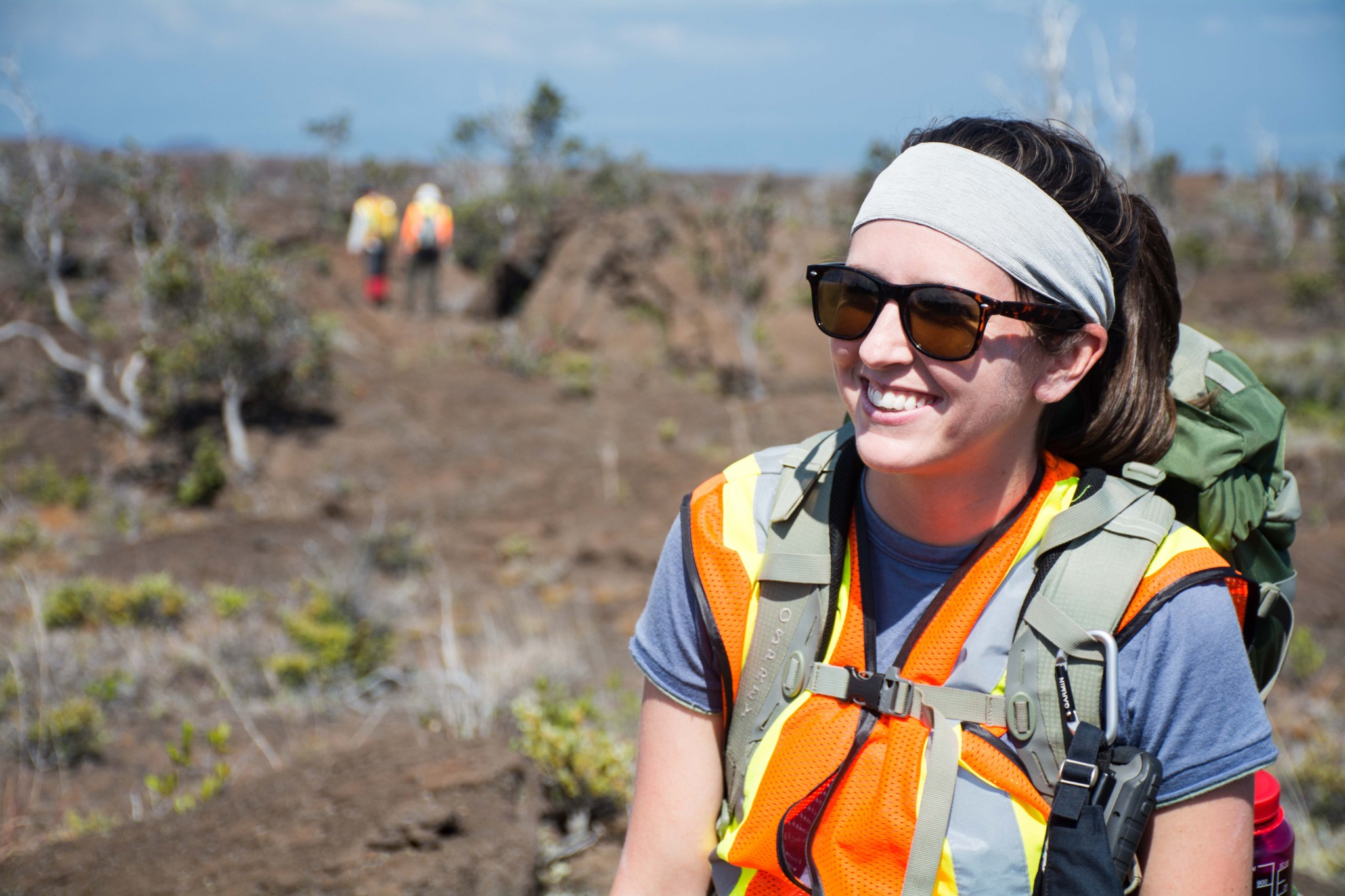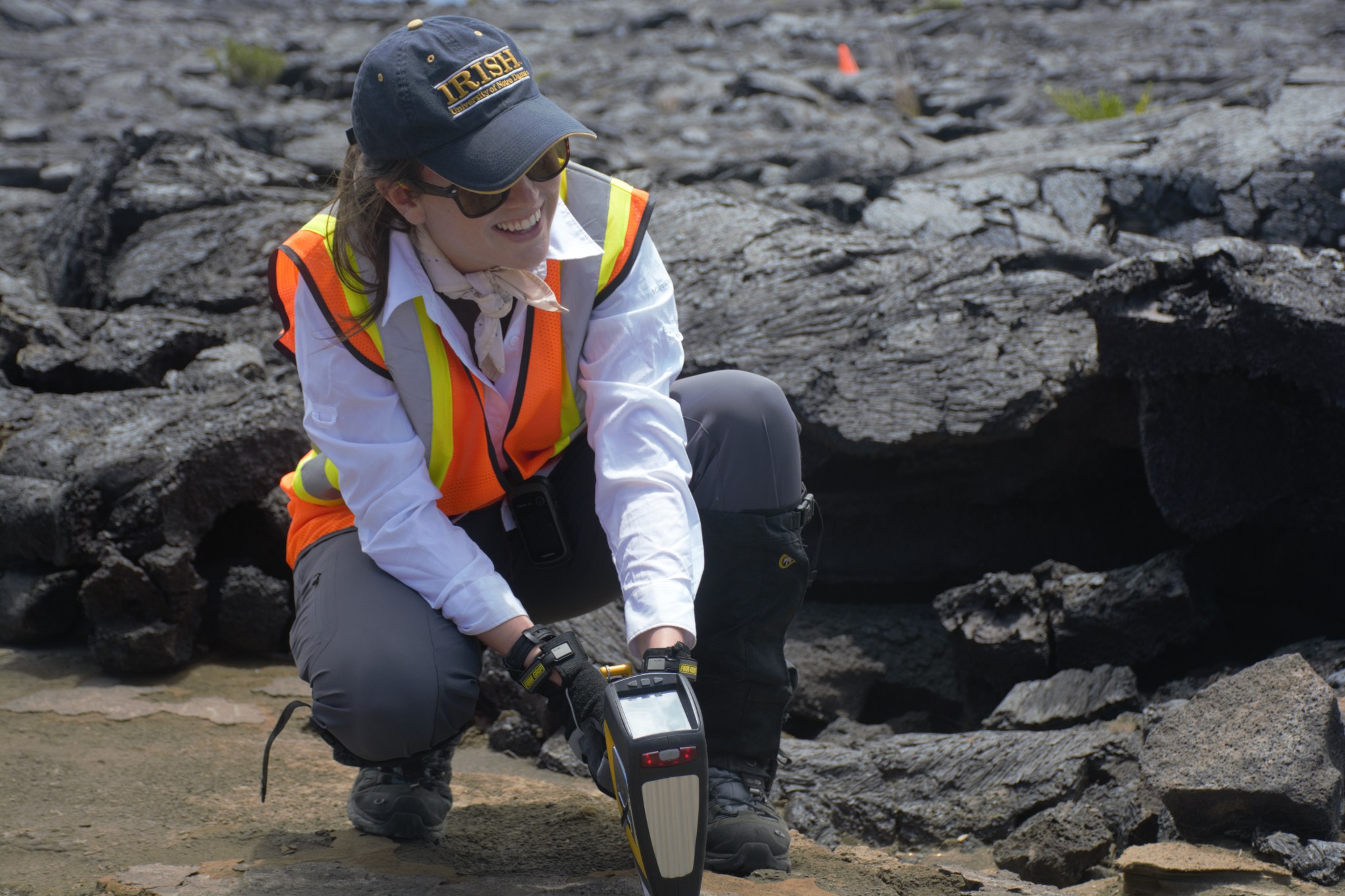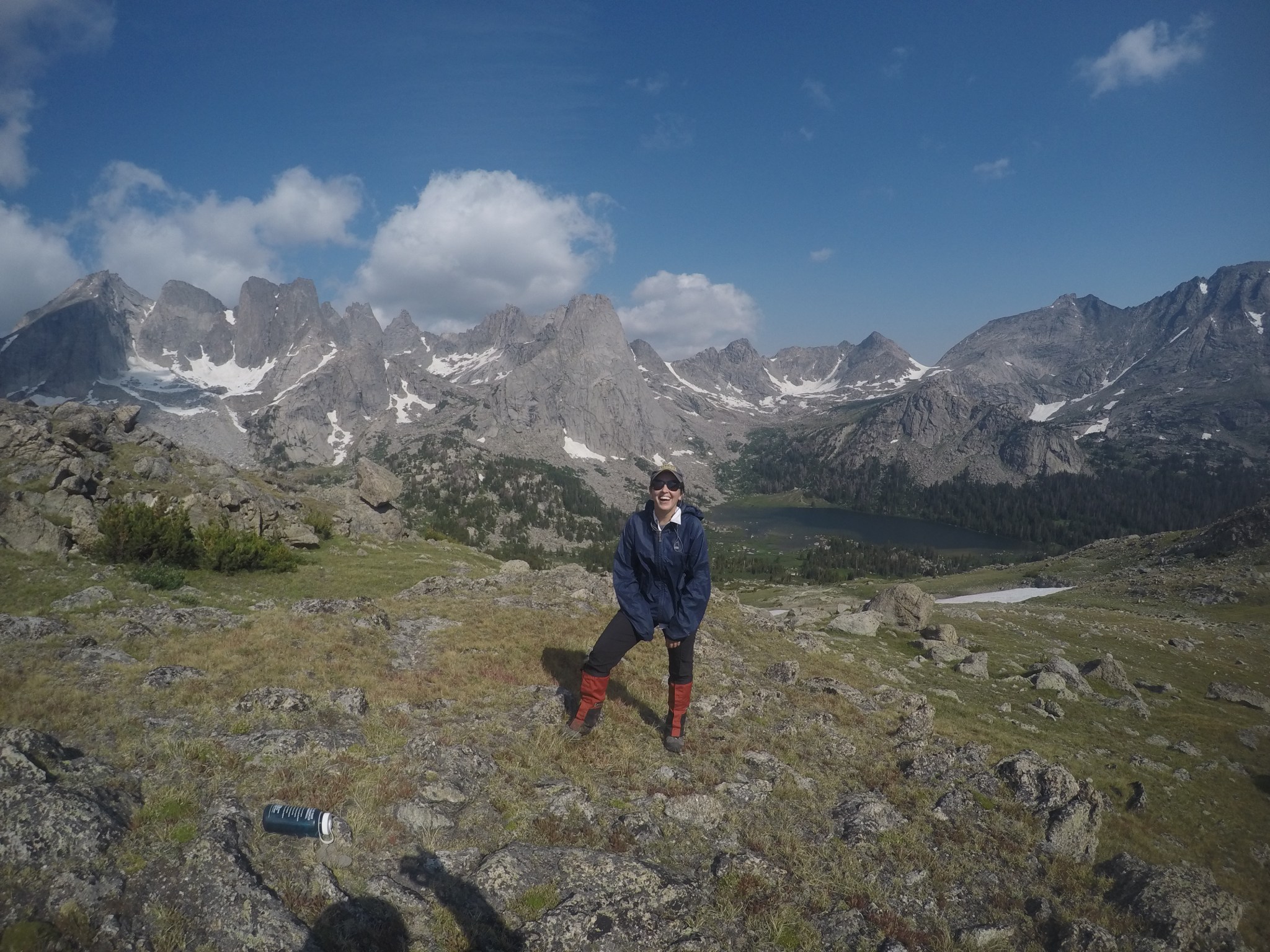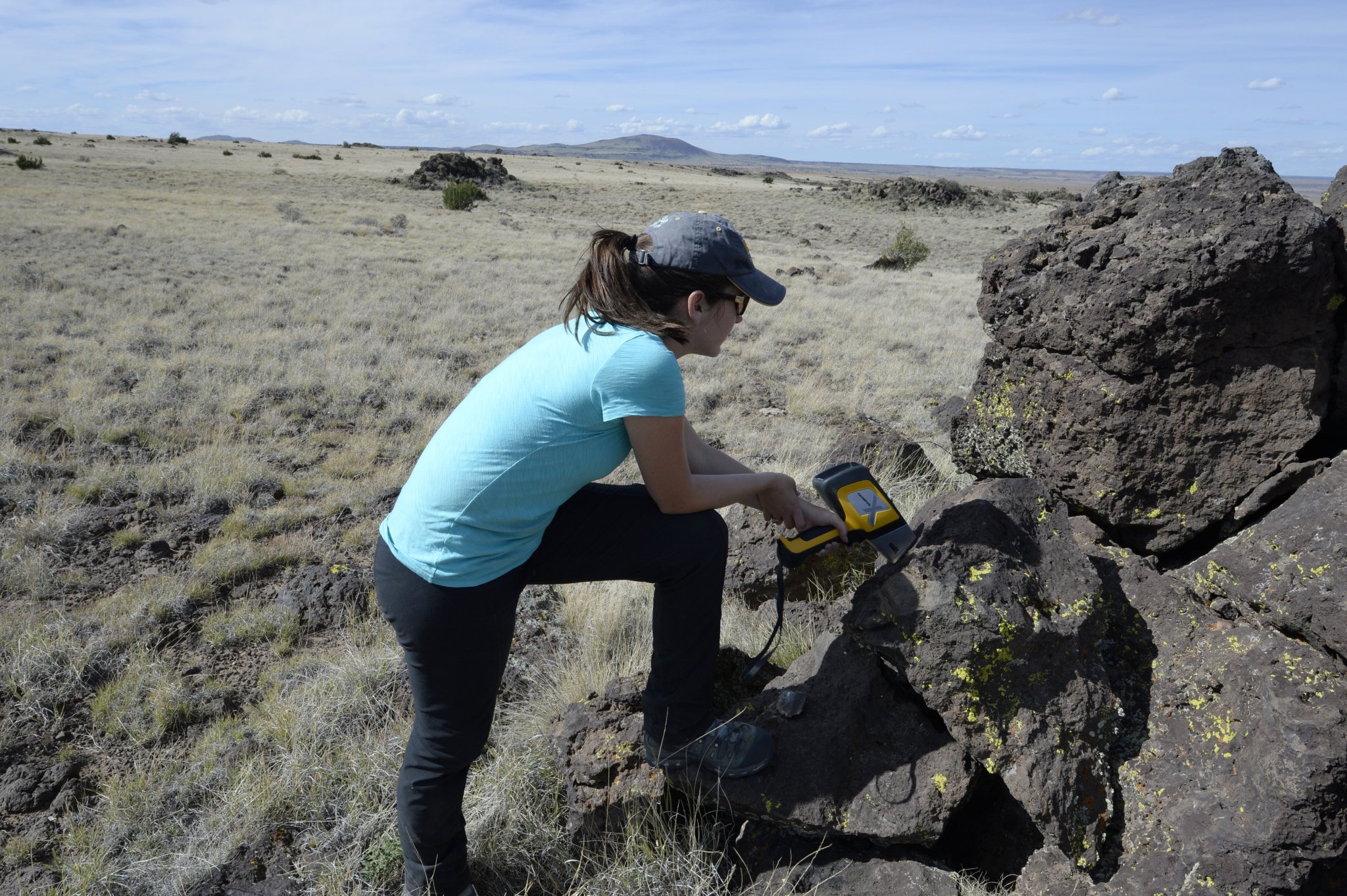Name: Kelsey Young
Formal Job Classification: Geologist
Organization: Code 698, Planetary Geology, Geophysics and Geochemistry Lab, Sciences Directorate
What do you do and what is most interesting about your role here at Goddard? How do you help support Goddard’s mission?
I am a geologist and I work in many different field sites all over the world and in the ocean. I use planetary analogs, or sites on earth that resemble other planets, to study how planetary surfaces form and evolve and also to determine how astronauts will explore other planets in the future. I am a part of multiple terrestrial analog projects, or teams who work to simulate specific aspects of spaceflight, including the NASA Johnson Space Center-led NEEMO (NASA Extreme Environment Mission Operations) team which conducts underwater missions to simulate space flight.
Why did you become a field geologist?
Growing up, my dad took my sister and me out on lots of camping and hiking adventures. I became hooked on hiking and exploring the outdoors. It was a no-brainer for me to become a geologist. I earned a bachelor’s in geology from Notre Dame, and a master’s and doctorate in geology from Arizona State University.
How did you come to NASA?
My first year of grad school, I also began a fellowship at NASA’s Johnson Space Center in Houston, which then funded the majority of my doctorate. After graduation, I did a post-doc with Jake Bleacher of NASA’s Goddard Space Flight Center in Greenbelt, Maryland. We still work very closely together. Although based at Goddard, I spend appreciable time at Johnson as well, serving as a bridge between the planetary science groups at both centers.
What are some of your most interesting analog field work projects?
In 2014, I started working on a five-year project called the Remote, In Situ and Synchrotron Studies for Science and Exploration Team (RIS4E), led out of Stony Brook University studying how to use portable field instruments in planetary exploration. Some of our instruments include handheld spectrometers that give real-time chemical analyses of rocks and sediments. Our hope is that in the future, astronauts can use these tools while exploring other planets to not only help them understand the area that they’re exploring but also to help them select samples to return to Earth for more in-depth laboratory analysis. The two field sites for RIS4E are the big island of Hawaii and the Potrillo Volcanic Field in New Mexico, which was also used as an Apollo training ground.
Since around 2016, I have also been the principal investigator for the TubeX Project, which aims to develop an exploration strategy for lava tubes, or tunnels created by flowing lava. Lava tubes could potentially be radiation-safe havens for astronauts when exploring the Moon and Mars, both of which have been shown to have lava tubes. On Earth, lava tubes range in size from only a few feet wide to as wide as a subway tunnel, and we believe that they may be even bigger on the Moon and Mars.
In 2017, I also became the principal investigator for the Scientific Hybrid Reality Environments SHyRE) project, which involves studying the lava flow from the big island of Hawaii from the RIS4E project and recreating the lava flow in hybrid reality. Hybrid reality is virtual reality with tactile elements. For example, when wearing VR glasses, I could both see and interact with specific objectives in the scene, such as a handheld spectrometer. Hybrid reality also allows us to simulate the sounds of the environments and relevant lighting conditions, and track all participant movement to allow for analysis of how each person interacts in the environment. The really cool part of SHyRE is that our environments are based on multiple data sets collected from different field instruments, so it will be as close to reality (both physically and scientifically) as possible. The SHyRE team includes scientists and engineers from both Johnson and Goddard, and the actual environment is being created at Johnson for easy access by engineers, mission planners and astronauts.
What do you do as a lead geology trainer for astronauts?
I am part of the Johnson-led astronaut geoscience training team. We train the new astronauts in geology, both in the classroom at Johnson and in the field in relevant field environments. We teach them in the classroom about geology, Earth science and planetary science. Then we take them into the field to teach them how to geologic map and to learn about planetary analog sites and the processes that shape the surfaces of other planets. For geologic mapping, we look at the surface rocks and make a map of their geologic history. It’s like solving a big puzzle. A favorite site for geologic mapping is the Taos Plateau in New Mexico, which has long been used as an astronaut training site all the way back to the Apollo crews who walked on the Moon. An analog site that NASA has used in the past both for surface exploration analog missions and for astronaut training site is the San Francisco Volcanic Field in Arizona.
How is underwater diving part of preparing astronauts for planetary exploration?
I support the NEEMO team, which uses the extreme undersea environment to simulate spaceflight missions. NEEMO is led by Johnson, but supported by NASA’s Ames Research Center in California’s Silicon Valley, Kennedy Space Center in Florida, sometimes other centers, and of course us! Crews made up of astronauts, scientists and engineers live in an underwater habitat for up to two weeks at a time. The available space is analogous to the cramped conditions that astronauts experience in spaceflight. Crew members complete tasks inside the habitat similar to those on the International Space Station and envisioned for crewed missions. Crews also complete extravehicular activities (EVAs) analogous to those astronauts will conduct when walking on the Moon and Mars.
Within the NEEMO team, I am one of the co-science leads for EVAs and help to coordinate the science objectives for each EVA. I am either in the water as a working diver, tasked with supporting the crew while they’re on EVA, or in the science mission control room communicating directly with the astronauts.
What advice would you give to someone doing field work in extreme environments?
Positive attitude is everything. After being safe in the field and supporting each and every team member, a positive attitude is most important. Having a solid team, including engineers, other scientists, flight controllers and other space flight professionals, where we all trust each other and work well together is vital.
We work in a lot of extreme environments. By nature, working in these environments will include setbacks and frustrations. Having a positive attitude and being a patient and supportive team member will help your team and your work succeed. One person’s bad attitude can swamp the entire team. Some field campaigns can last weeks or months in isolated environments, a quality that terrestrial field campaigns share with spaceflight missions. This makes having a good working relationship with every team member all the more vital.
Is there something surprising about your hobbies outside of work that people do not generally know?
I hike, I camp, I dive and I cook. And I generally like to keep myself busy! Go Nats!
By Elizabeth M. Jarrell
NASA Goddard Space Flight Center
































